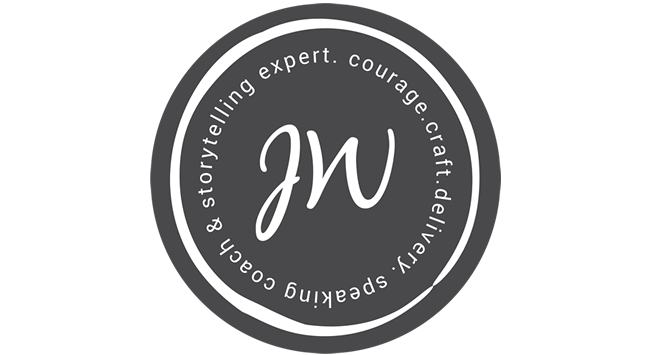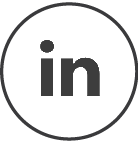How to Make your Presentation More Persuasive
December 10th, 2019

Because really that’s what it’s all about, right? Getting the yes. Making the sale. Even if you think you’re not “selling” something, you are. You’re selling an idea. A new behavior. Maybe also a product or service. A program.
But whatever the reason for your talk, you’re persuading your audience to trade in something they have (a behavior, a way of thinking, money, time) for something you have (a product, a service, a new way of thinking, a new behavior).
You’re “selling” something.
But before you get to selling any of those things I named above, you gotta sell the idea behind it so that your audience sees the WHY behind what you’re offering.
When I first started speaking, my goal was to get through the dang talk. I just wanted to survive. Had no goal of actually getting a client, or impacting someone through my talk, I just wanted to survive.
Since then I’ve figured out a thing or two about how to make a talk truly work for me and for my audience — so we all benefit from the investment of blood, sweat & tears. (OK there’s generally not blood involved, but definitely sweat & tears.)
Now I not only love speaking on stages, I thrive on it.
And I love thinking about how to make talks more engaging, more compelling, more lucrative and more persuasive.
Here are a few things you can start using right away to help notch up the persuasive potential of your talk.
1. Lead with value — don’t start with an introduction.
“IT’S NOT ABOUT YOU!” Remember? I’m in the audience, and I don’t really care that much about you and your credentials or your awesomeness or your expertise.
I’ve heard too many openings that sound something like this:
“Hi my name is _______.
I got a degree at xyz.
I’ve worked with xyz company.
Here’s my team of more awesome people”
I will care about that once I believe you can help me. But if you start with that right out of the gate, I’m yawning and sneaking a peak at my phone to see if I got that text I was expecting.
Instead, lead with value. Let me know from the getgo that you’re here for me. That will get my attention right away, and lay the groundwork for me to say YES to your big idea.
2. Use YOU not WE.
You know how in an emergency, if you say “call 911” everyone will stand around looking at each other thinking someone else will make the call?
But if you point to a person and say “YOU! Call 911!” that person will pull out their phone and take action.
When giving a talk or a presentation, it’s essential to know exactly who you’re talking to.
If you could get your message through to ONE PERSON, who would that person be?
Talk to that person. Not a generic WE. Talk to YOU. Then I’ll sit up and listen.
3. Tell a story.
A story is going to go so much further than a bunch of theoretical ideas, or a boatload of graphs & charts & data points. Those things are fine and valuable and necessary indeed, but they’re not going to have the same impact without a story.
I helped a woman (who was all geeked out on math & science) craft a pitch for a pitch contest.
Early in our work together, she told me a story about the reason she made the product. The story hit me right in the gutt.
I said “Tell that story.” She said nope. She insisted they don’t want to hear that fluff. They want the hard data.
At the final practice round, she placed last in the mock competition, so she came back into my office and said “OK. I’ll try the story.”
Can you guess how it ended? Yep. She won $65,000. That’s a $65,000 story right there.
4. Light the fire of NOW
I’m not for creating false urgency at all. I don’t want anyone to buy from a place of urgency. There’s too much urgency out there in the world for any of us to be generating false urgency.
That said, if you can truly answer the question “WHY NOW, NOT LATER?” to the prospect, they create their own urgency.
If you’re able to convey the cost of NOT taking action, your audience will be right there with you ready to raise their hand & say yes.
5. Have a clear (as in not confusing) call to action.
What do you want your audience to DO (or think or say or feel) at the end of your talk?
There’s nothing like an inspirational talk that inspires every last cell in my body… and then I’m left hanging in the big fat unknown of what now? So I leave the room and walk right back into my same ole same ole status quo.
Your job is to answer that “What now?” question for your audience.
You’ve delivered value. They’ve bought into the idea. They’re ready to say yes.
You need to ensure they know exactly what step they need to take next to get them closer to the thing they want.
6. Less is more
Don’t try to say everything. Really. You’ll just confuse and overwhelm your audience. It’s hard, I know. (Believe me, I’ve been there)
But the less you say, the more your audience will hear.
Keep it simple. Kill your darlings. Thrash & burn the filler. Hone in on what’s truly essential, and your audience will hear way more of what you have to say.
7. Back it up with research
Not at the expense of story by any means!
Please don’t pummel me with stats & numbers & slides of charts & graphs, but do share meaningful data that tells a story.
When you use data, don’t just throw it in my face and say “There. Did data.”
Tell me the story of the data. Paint a picture of how it’s relevant for me. Share the data, but don’t leave me to do the work of why it’s meaningful.
8. Don’t make your audience wrong.
We can sometimes be tempted to get into a mindset of “My way is right. Your way is wrong” and we think that’s how to make a sale.
Bzzzt.
You may have an impulse to tell your audience they’ve been doing it wrong all along, and that’s why they’re failing, and that’s why they need YOUR HELP.
It’s true that what you have to share is going to make a huge difference in their lives. But not because they’ve been doing it wrong.
Try making your audience right. They’re smart. They’re already doing it the best they can. But your new perspective will be the missing link that will take them to the place they want to go.
9. Speak to the conversation in the mind of your audience.
Your audience will certainly have objections to what you’re saying. Self-doubt, reasons why they’re going to hold on to the current way of doing things, and good, healthy skepticism are bound to be bouncing around in your audiences head. Especially if the yes you’re asking or is going to mean letting go of a familiar habit or behavior.
They might be thinking “That might work for you, but no way is that ever gonna work for me” or “I could never pull something like this off” or ” Yeah but I have xyz obstacle so this doesn’t apply to me.”
Articulate those possible objections to yourself, then in your talk use phrases like “You may be thinking….” or “At this point you’re probably wondering…”
When you can identify those objections before they take hold, you’re much closer to the big fat yes you’re after.
Next time you’re planning a talk or presentation, try incorporating these strategies and watch the yesses roll in!
« Your Body Says it All | What Online Dating and Public Speaking have in Common »


 FACEBOOK
FACEBOOK INSTAGRAM
INSTAGRAM LINKEDIN
LINKEDIN SUBSCRIBE
SUBSCRIBE
Leave a Reply